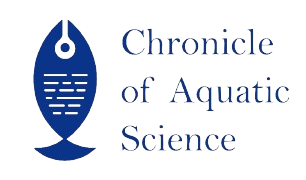| File | Action |
|---|---|
| Bhateja et al., 2023 | Download |
- 919088951040 call us
- chronicleofaquaticscience@gmail.com Mail us
CoAS_V1IS1_03
Popular Article
Potential of Edible Aquatic Insects as Future Food
Sheenam Bhateja, Hemant Swami and Sachin
Abstract
Major water bodies are rich in flora and fauna biodiversity, including few orders of aquatic insects, that survive throughout their whole life span (beetles, bugs) or during only specific life stages (the larval Odonata, Ephemeroptera, Trichoptera etc.). Aquatic edible insects have tremendous potential as human food due to high nutritional (high quality protein, micronutrients) as well as economic and environmental benefits. The nutritional quality of aquatic edible insects is equivalent or superior to that of diet derived from other animal sources like birds and mammals. Food security and food safety are the major concerns worldwide. High standards food safety measures ensuring consumer health protection and effective hygiene practices need to be introduced. Global acceptance of edible insects as a major constitute in human diet is the major obstacle.
Keywords
Aquatic Edible Insects, Entomophagy, Nutritional Value, Food Security, Risk and Hazards
Corresponding Author
Sheenam Bhateja
References
1. FAO. Insects for food and feed. (2023) https://www.fao.org/edibleinsects/84627/en/
2. Klaus WL and Yukiko N. Edible insects as future food: chances and challenges. Journal of Future Foods. (2021); 1(1): 38-46.
3. Sarmah M, Bhattacharyya B, Bhagawati S and Sarmah K. Nutritional Composition of Some Commonly Available Aquatic Edible Insects of Assam, India. Insects. (2022); 13(11):976.
4. Williams DD and Williams SS. Aquatic Insects and their Potential to Contribute to the Diet of the Globally Expanding Human Population. Insects. (2017); 8(3):72.
5. Zhao M, Wang CY, Sun L, He Z, Yang PL, Liao HJ and Feng Y. Edible Aquatic Insects: Diversities, Nutrition, and Safety. Foods. (2021); 10(12):3033
- Published online
- 25th June, 2023
How to Cite the Article
Bhateja S, Swami H and Sachin (2023) Potential of Edible Aquatic Insects as Future Food. Chronicle of Aquatic Science 1(1): 12- 15
Copyright
This is an open-access article distributed under the terms of the Creative Commons Attribution License (CC BY). The use, distribution or reproduction in other forums is permitted, provided the original author(s) and the copyright owner(s) are credited and that the original publication in this journal is cited, in accordance with accepted academic practice. No use, distribution or reproduction is permitted which does not comply with these terms.

Bhateja et al., 2023


